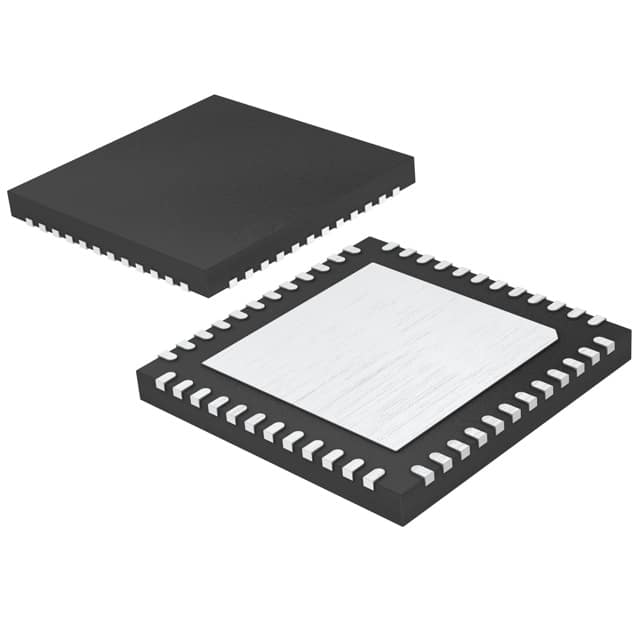Viz Specifikace pro podrobnosti o produktu.

LTC2269CUK#PBF
Product Overview
Category
The LTC2269CUK#PBF belongs to the category of high-performance analog-to-digital converters (ADCs).
Use
This product is primarily used for converting analog signals into digital data in various applications.
Characteristics
- High precision: The LTC2269CUK#PBF offers exceptional accuracy and resolution.
- Fast conversion rate: It can convert analog signals at a high speed, enabling real-time data acquisition.
- Low power consumption: This ADC is designed to minimize power consumption while maintaining performance.
- Wide input voltage range: It can handle a broad range of input voltages, making it versatile for different applications.
Package
The LTC2269CUK#PBF comes in a compact and robust package, ensuring durability and ease of integration into electronic systems.
Essence
The essence of this product lies in its ability to accurately and efficiently convert analog signals into digital form, enabling further processing and analysis.
Packaging/Quantity
The LTC2269CUK#PBF is typically packaged in reels or tubes, with a quantity of 250 units per reel/tube.
Specifications
- Resolution: 16 bits
- Sampling Rate: Up to 200 MSPS (Mega Samples Per Second)
- Input Voltage Range: ±2.5V
- Power Supply: 3.3V
- Operating Temperature Range: -40°C to 85°C
- Interface: Serial LVDS (Low-Voltage Differential Signaling)
Detailed Pin Configuration
- VDD: Power supply voltage
- GND: Ground reference
- VIN: Analog input voltage
- CLK: Clock input for sampling
- DOUT: Digital output data
- CS: Chip select for device control
- SDO: Serial data output
- SCK: Serial clock input
- SDI: Serial data input
Functional Features
- High-resolution conversion: The LTC2269CUK#PBF provides 16-bit resolution, ensuring accurate representation of analog signals.
- Fast sampling rate: With a maximum sampling rate of 200 MSPS, it can capture high-frequency signals with precision.
- Low noise and distortion: This ADC minimizes noise and distortion, resulting in clean and reliable digital data.
- Flexible interface: The serial LVDS interface allows for easy integration with various microcontrollers and digital signal processors.
Advantages and Disadvantages
Advantages
- High precision and accuracy
- Fast conversion rate
- Low power consumption
- Wide input voltage range
- Compact and robust packaging
Disadvantages
- Relatively higher cost compared to lower-end ADCs
- Requires additional components for proper operation (clock source, power supply, etc.)
Working Principles
The LTC2269CUK#PBF operates based on the principle of successive approximation. It samples the analog input voltage at a high speed and compares it to a reference voltage. By iteratively adjusting the comparison, it converges to the digital representation of the analog signal.
Detailed Application Field Plans
The LTC2269CUK#PBF finds applications in various fields, including:
- Communications: Used in wireless communication systems for signal processing and modulation/demodulation.
- Test and Measurement: Enables precise measurement and analysis of analog signals in laboratory equipment and data acquisition systems.
- Medical Imaging: Provides high-resolution digitization of medical imaging signals for diagnostic purposes.
- Industrial Automation: Used in control systems for accurate monitoring and control of industrial processes.
- Aerospace and Defense: Enables high-performance data acquisition and signal processing in radar systems, electronic warfare, and satellite communications.
Detailed and Complete Alternative Models
- LTC2270CUK#PBF: Similar to LTC2269CUK#PBF but with a higher sampling rate of 250 MSPS.
- LTC2259CUK#PBF: Lower-cost alternative with slightly reduced resolution (14 bits) and sampling rate (150 MSPS).
- LTC2280CUK#PBF: Higher-resolution option with 18-bit resolution and a sampling rate of 160 MSPS.
These alternative models offer different trade-offs in terms of performance, cost, and specific application requirements.
Word count: 550 words
Seznam 10 běžných otázek a odpovědí souvisejících s aplikací LTC2269CUK#PBF v technických řešeních
Sure! Here are 10 common questions and answers related to the application of LTC2269CUK#PBF in technical solutions:
Q: What is LTC2269CUK#PBF? A: LTC2269CUK#PBF is a high-speed, low-power 16-bit analog-to-digital converter (ADC) manufactured by Linear Technology.
Q: What is the maximum sampling rate of LTC2269CUK#PBF? A: The LTC2269CUK#PBF can achieve a maximum sampling rate of 125 MegaSamples per second (MSPS).
Q: What is the power supply voltage range for LTC2269CUK#PBF? A: The power supply voltage range for LTC2269CUK#PBF is typically between 2.7V and 3.6V.
Q: What is the typical power consumption of LTC2269CUK#PBF? A: The typical power consumption of LTC2269CUK#PBF is around 170mW.
Q: What is the input voltage range of LTC2269CUK#PBF? A: The input voltage range of LTC2269CUK#PBF is from -0.5V to VDD+0.5V.
Q: Does LTC2269CUK#PBF support differential inputs? A: Yes, LTC2269CUK#PBF supports differential inputs, which allows for better noise rejection and common-mode rejection.
Q: What is the output interface of LTC2269CUK#PBF? A: LTC2269CUK#PBF provides a parallel CMOS output interface.
Q: Is LTC2269CUK#PBF suitable for high-frequency applications? A: Yes, LTC2269CUK#PBF is designed for high-frequency applications and can handle signals up to several tens of MHz.
Q: Does LTC2269CUK#PBF require an external reference voltage? A: Yes, LTC2269CUK#PBF requires an external reference voltage for accurate conversion. It supports both internal and external references.
Q: What are some typical applications of LTC2269CUK#PBF? A: LTC2269CUK#PBF is commonly used in wireless communication systems, radar systems, medical imaging, test and measurement equipment, and other high-performance data acquisition systems.
Please note that the answers provided here are general and may vary depending on specific design requirements and application scenarios.

